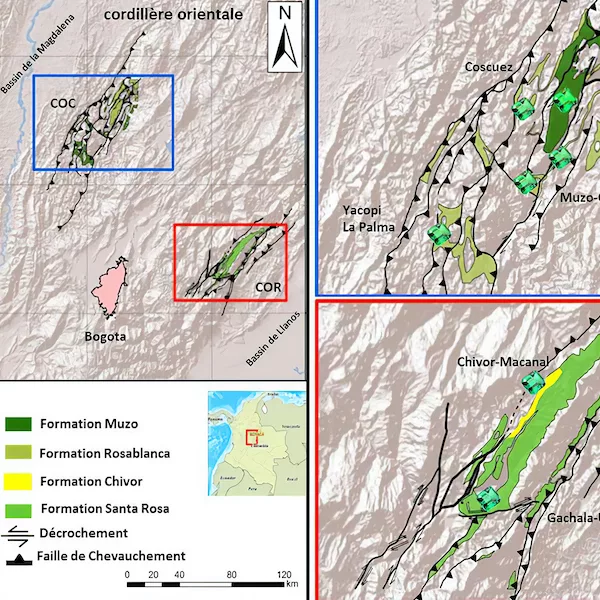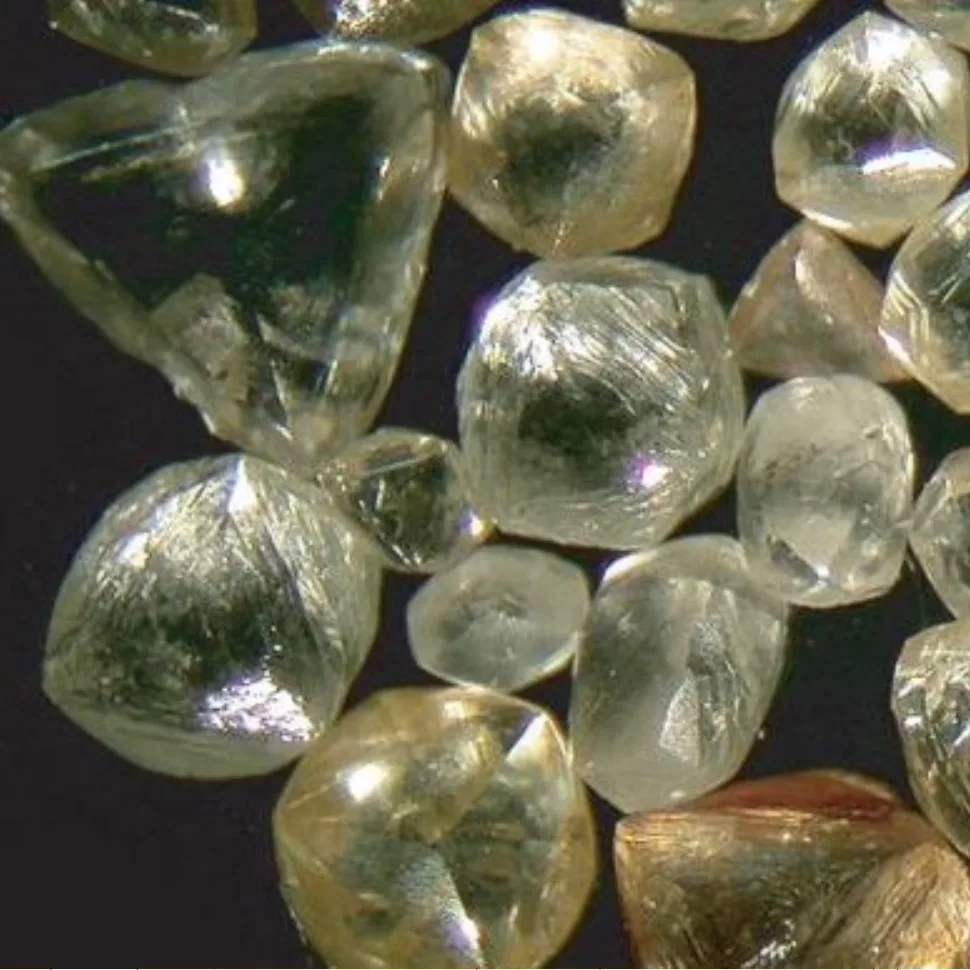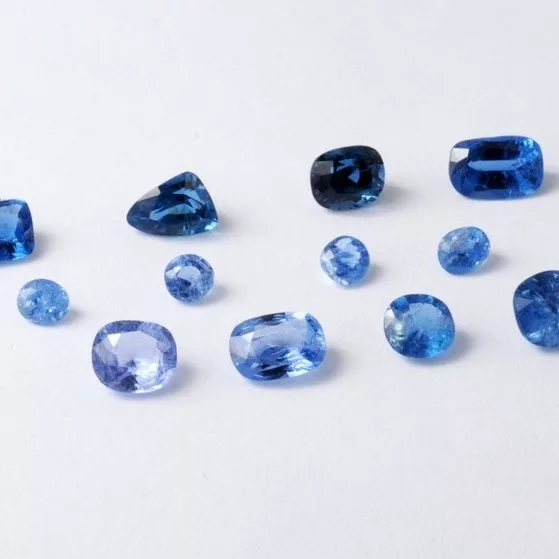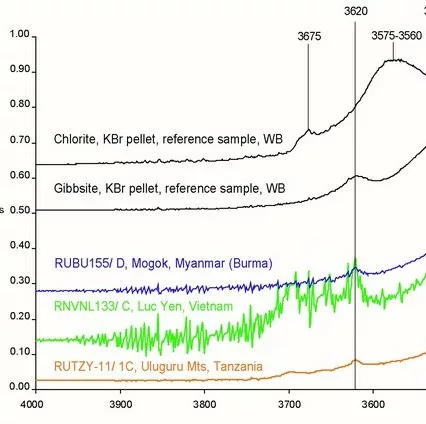Fingerprint differences between Emeralds from two main zones of production in Colombia in response to input from their host rock
Keywords: Emeralds, fingerprint, geochemistry, gemology.
Although there is information about techniques to separate Colombian emerald material from that of other countries, not much information is available on how to differentiate Colombian emeralds from the Western Belt (COC), and those from the Eastern Belt (COR). The two main producing zones in Colombia are Muzo and Chivor respectively (Fig.1). The authors try to set a baseline using some techniques to separate emeralds within Colombia, understanding a fingerprint inputted by the rocks that host them. In the COR, the emerald-bearing veins are hosted in a stratiform brecciated level predominantly composed of gray albitites. Mineralization was controlled by an extensional structural style. In contrast, mineralized veins and breccias in the COC are hosted by organic-rich black shales and were emplaced in a compressional tectonic regime. (Cheilletz et al. 1994; Mantilla et al 2008).
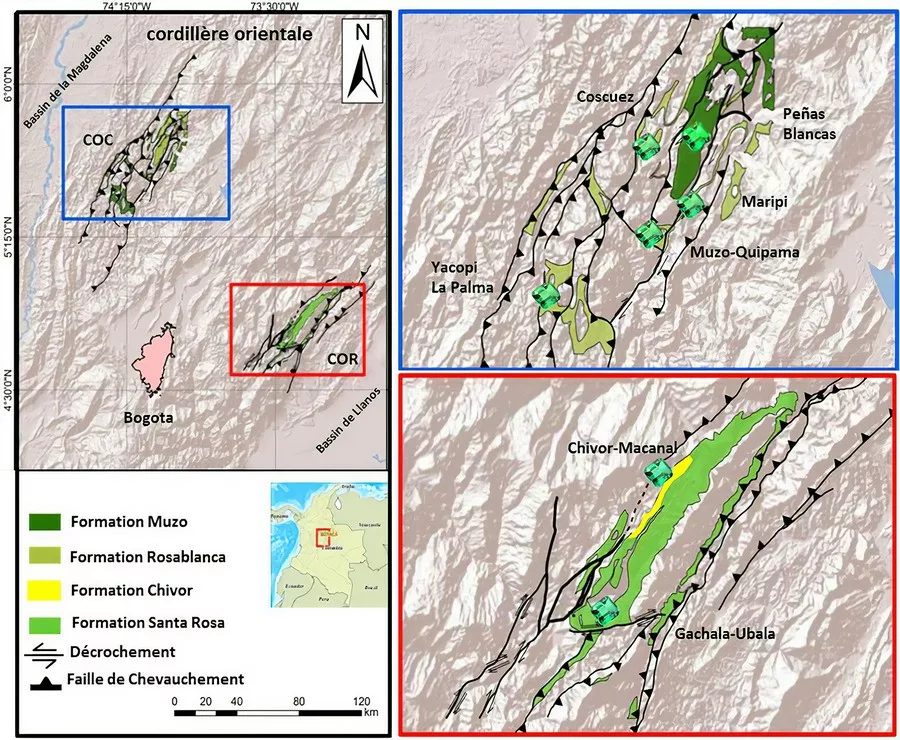
From the gemmological point of view differences in the fluorescence behaviour, higher for the COR, combined with some other features like chemical aspects (Cr, V, Fe ratios), photoluminescence (R2 and R1 emission). A total of 694 rough emerald samples were used in this study. Emeralds from COC and COR have, on average, different concentrations of Cr3+ therefore their reaction to UV light excitation differs. Emeralds from COR almost always display higher intensities whereas samples from the COC display a wide range of intensities ranging from very high to inert, being the most common reactions those who fall in the lower intensities.
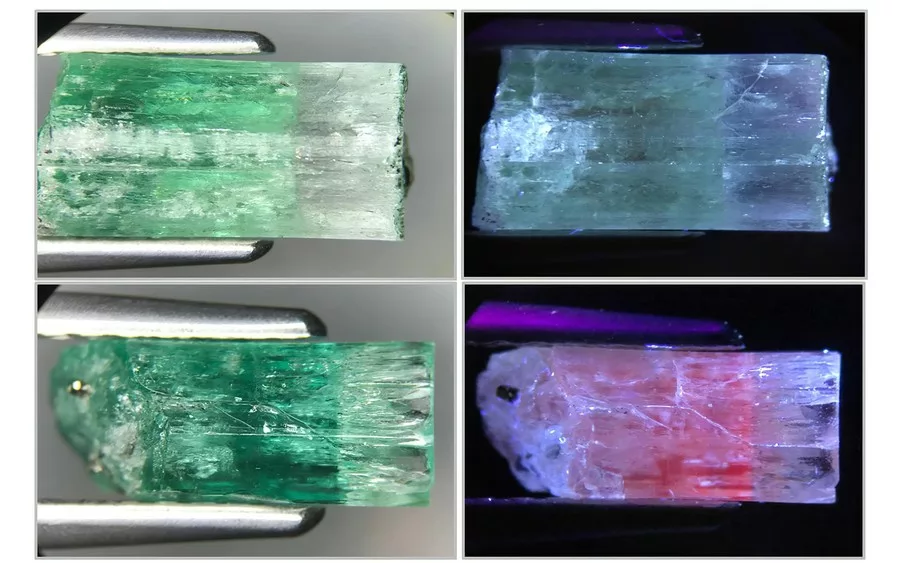
Low Cr-V values (less than 100 ppm per element) are not uncommon in certain localities, especially in the COC, accounting for populations of weakly colored stones. These samples can even display a Fe major than Cr-V behaviour. On the other hand, high concentrations of Cr and V (above 4000 ppm) are typically found in the finest emeralds occurring in the COC. In the COR, highly colored emeralds can contain major than ~4000 ppm of Cr but no more than ~2200 of V. That high Cr/V ratio is responsible for the typical bluish hue displayed by emeralds from the COR.
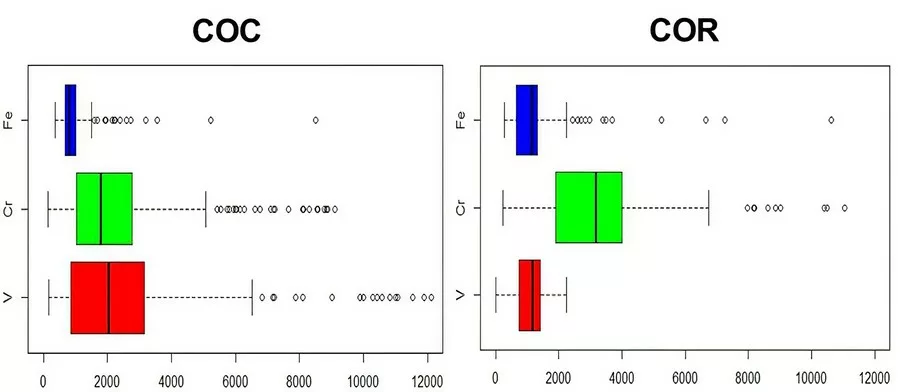
The average of the position of the R1 and R2 peaks shows ranges that can help to distinguish between the two emerald belts. The CEOR emeralds show an average R1 peak of 683.603nm, those of COC 683.735 nm. Also, the high intensity of the spectra in the R1 peak in the CEOR emeralds reached almost 15,000 cps contrasts with the COC emeralds are close to 5,000 cps.
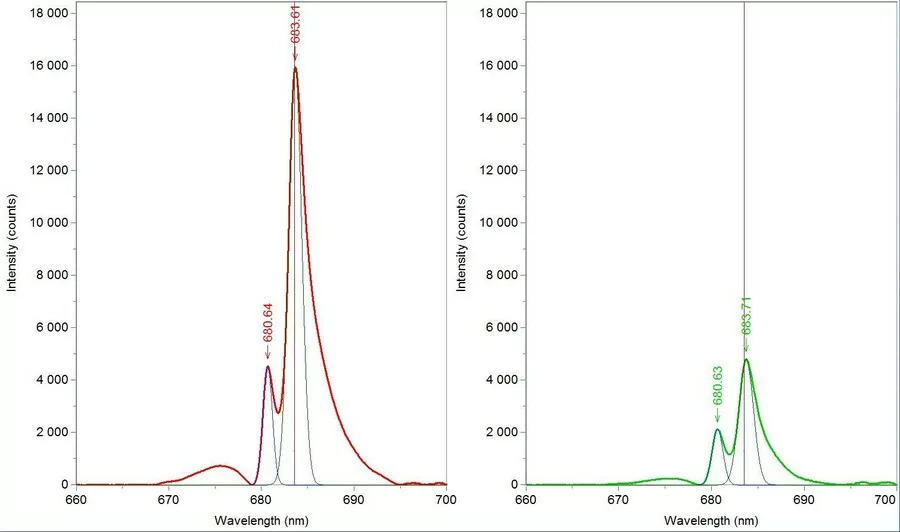
It is evident that the geological environment is the main factor controlling the emerald chemistry. In view of the differences between the two emerald belts, the variations and trends in the Cr-V-Fe ratios of emeralds are not unexpected. For instance, in the COC most of the host rocks are organic-rich shales with Cr/V ~0.25 (Campos & Roser, 2007); whereas in the COR, the host rocks are dominated by black shales, evaporitic levels and albitites from the Chivor formation (formerly known as the Guavio limestones) (Terraza et al., 2008). A higher V supply might imply a higher V incorporation in the emeralds from the COC. The occurrence of V-dominated emeralds, associated with organic-rich sedimentary and metasedimentary rocks, have been documented in distinct locations (Lake et al., 2017 and references therein). Thus, indicating that the Cr-V-Fe ratios are rock-controlled and reliant on the lithostratigraphy column of the geologic formations. It is evident that the geological environment is the main factor controlling the emerald chemistry. In view of the differences between the two emerald belts, the variations and trends in the Cr-V-Fe ratios of emeralds are not unexpected. For instance, in the COC most of the host rocks are organic-rich shales with Cr/V ~0.25 (Campos & Roser, 2007); whereas in the COR, the host rocks are dominated by black shales, evaporitic levels and albitites from the Chivor formation (formerly known as the Guavio limestones) (Terraza et al., 2008). A higher V supply might imply a higher V incorporation in the emeralds from the COC. The occurrence of V-dominated emeralds, associated with organic-rich sedimentary and metasedimentary rocks, have been documented in distinct locations (Lake et al., 2017 and references therein). Thus, indicating that the Cr-V-Fe ratios are rock-controlled and reliant on the lithostratigraphy column of the geologic formations.
References:
- Campos, N.O., Roser, B.P. (2007) Geochemistry of black shales from the Lower Cretaceous Paja Formation, Eastern Cordillera, Colombia: Source weathering, provenance, and tectonic setting. Journal of South American Earth Sciences, 23(4), pp. 271-289.
- Cheilletz, A., Feraud, G., Giuliani, G., Rodriguez, C.T. (1994) Time-pressure and temperature constraints on the formation of Colombian emeralds: an 40Ar/39Ar laser microprobe and fluid inclusion study. Economic Geology, 89(2), pp. 361-380.
- Lake, D.J., Groat, L.A., Falck, H., Mulja, T., Cempírek, J., Kontak, D., Marshall, D., Giuliani, G., Fayek, M. (2017). Genesis of Emerald-Bearing Quartz Veins Associated with the Lened W-Skarn Mineralization, Northwest Territories, Canada. Canadian Mineralogist, 55(4), pp. 561–593. https://doi. org/10.3749/canmin.1700025
- Mantilla, L.C, Arias, S. A., Serrano, J. J., Conde, G. J., Gomez, D. C., Ramirez, J. C.,…, Pena, N. (2007) Investigación petrográfica y geoquímica de las sedimentitas del Cretácico Inferior (K1) y sus manifestaciones hidrotermales asociadas; planchas 169, 170, 189, 190 (cordillera oriental): IngeominasUIS, Colombia
- Terraza, R., Montoya, D., Reyes, G., Moreno, G., Fuquen, J. (2008) Geología del cinturón esmeraldífero oriental, planchas 210, 228 y 229 (informe). Bogotá: Ingeominas, Colombia.
Acknowledgements:
The authors would like to thank all the organizations and institutions that made this work possible. This research project has received financial support from the National Emerald Fund (FNE) and the agreement of the Ministry of Mines, the professional organizations Aprecol, Asocoesmeral and Acodes, and finally the Colombian Emerald Federation FEDESMERALDAS.

